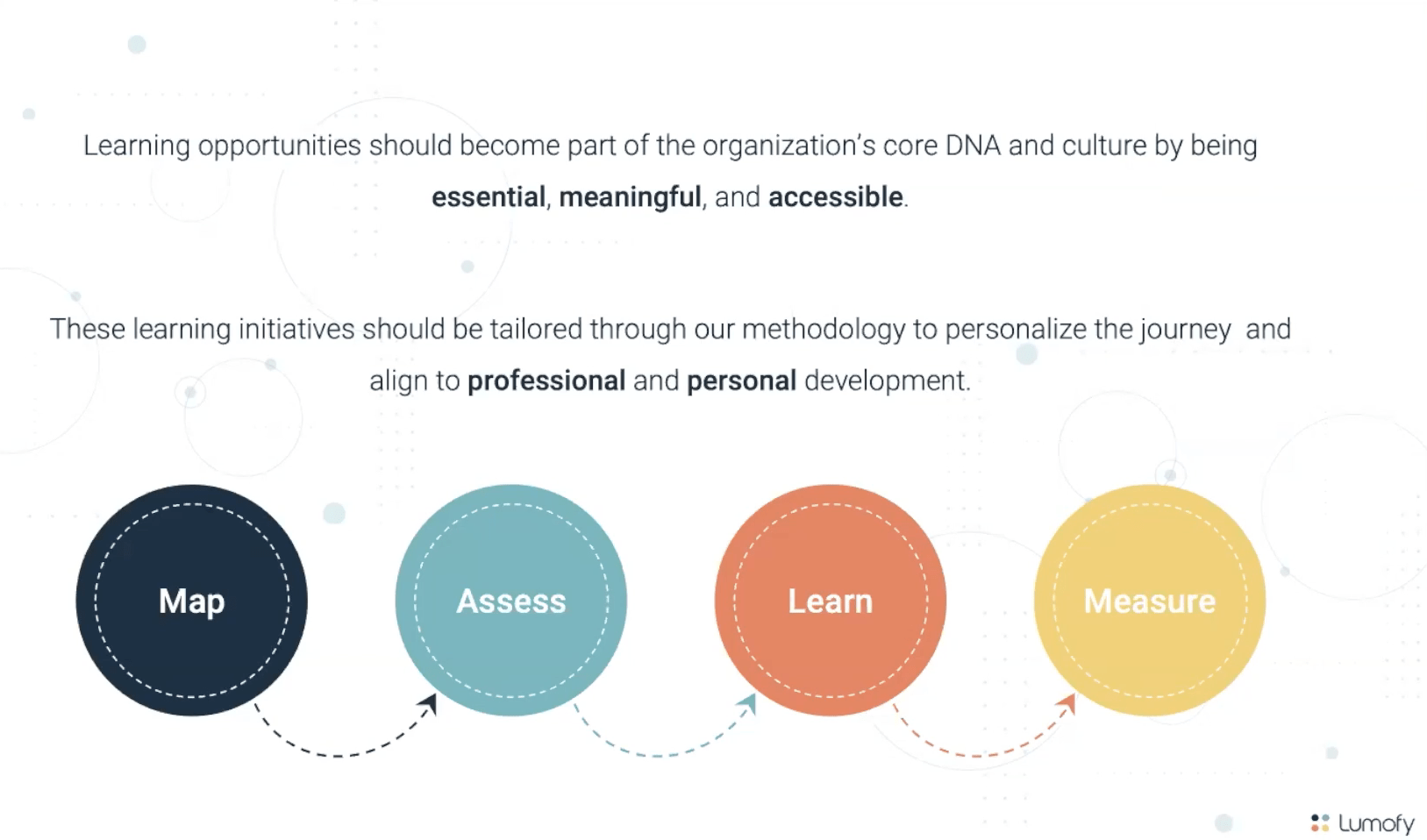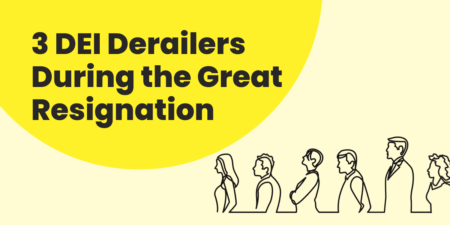In today’s world where employees are leaving their companies in record numbers, it’s imperative that organizations develop a strong culture of workplace learning and development to keep employees effective and engaged.
Learn from leaders at Lumofy how a strong learning culture and a feeling of inclusion through personalized learning paths can drive employee retention.
Getting Clear on DEI
In order to build an organization based on diversity, equity and inclusion, organizations need to be clear on what it means.
Diversity is the collective of different experiences that people bring to workplace culture. This includes not only race, gender, age, etc., but also personality characteristics such as introvert vs. extrovert, working styles, and more.
Inclusion means how we value people with their diversity – making sure they feel welcome and creating a culture of belonging where everyone can thrive.
Equity tends to be confused with equality. Equality means giving people the same tools and same rights – treating everyone the same, regardless of differences. Equity, on the other hand, means considering each person’s unique characteristics and needs, and giving them personalized tools and resources based on these differences.
Once organizations are clear on the definition of DEI, they can begin incorporating it into their learning strategies.
How to Incorporate DEI into the Workplace Learning Culture
A common strategy regarding DEI is for organizations to start creating programs and strategies based on what they think they know about diversity, equity and inclusion. But unfortunately, this doesn’t always work out as intended. In fact, billions of dollars are spent on ineffective DEI-based programs.
3 Common DEI Derailers
Here are three common reasons why organizations fail to see results from their DEI efforts.
DEI derailer #1: Creating initiatives based on assumptions
As previously mentioned, if organizations create DEI initiatives based on common assumptions of what DEI means, or what they think they understand about DEI, their efforts will fall short.
DEI derailer #2: Focusing on standalone programs
It’s great to create programs based on diversity, but they shouldn’t be created just for the sake of checking a box – they need to be tied to corporate initiatives.
Let’s take ERGs (employee resource groups) as an example. Many companies have various ERGs – popular ones include resource groups for the LGBTQ community, Black employees, and women. These groups provide a safe space where like folks can discuss issues specific to their identities and feel that sense of belonging needed to thrive at work.
However, leadership should also work with these groups to move the needle forward with business goals: What recruitment practices can we put in place to attract members of the LGBTQ community? How can the organization be more inclusive of Black employees? What percentage of women in leadership do we currently have, and where does it need to be? These are the types of questions organizations should consider.
To be effective, DEI initiatives need to align with business objectives.
DEI Derailer #3: Focusing on Behaviors
Focusing on changing behaviors isn’t enough for a strong DEI culture. Companies must incorporate a structural component to DEI initiatives that’s embedded across the organization.
The Impact of Solid DEI Initiatives and the Importance of Learning Cultures
On the positive side, organizations who effectively implement DEI into their cultures see strong benefits. Well-devised DEI initiatives maximize performance of individuals, teams, and the entire company.
The organization is more likely to:
- Capture new markets
- See products become ideas
- Outperform on profitability
- Receive higher innovation revenue
In addition, diverse and inclusive teams make better decisions 87% of the time, and see the same percentage of effectiveness on the company’s business performance.
We see the same benefits from companies with strong learning cultures. Employees who work where there’s a strong workplace learning culture report being:
- More productive
- More likely to innovate
- More likely to stay at the company
- Part of a culture of belonging
Providing learning opportunities is part of an organization’s core DNA – and these opportunities should be essential, meaningful, and accessible…which is where DEI comes in.
Incorporate DEI Using the Four Core Methodology: Map, Assess, Learn, Measure
To incorporate DEI into learning culture and align both to strategic business objectives, Lumofy developed the Four Core Methodology outlined below.

MAP
- Strategy: Map job competencies to the organization’s objectives and job requirements.
- DEI element: Help organizations determine which DEI initiatives to prioritize and how to implement them.
ASSESS
- Strategy: Assess the talent within your organization to determine strengths and gaps, and who fits best in which roles. Use psychometric analysis to determine learners’ aptitudes.
- DEI element: Determine where to focus your efforts to make the biggest impact on DEI initiatives.
LEARN
- Strategy: Create customized, targeted learning paths based on assessments.
- DEI element: Develop inclusive people with an inclusive mindset. Be a role model and inspire others.
MEASURE
- Strategy: Measure progress and build an organization with potential to innovate. Provide targeted feedback in the form of coaching, webinars, and live sessions.
- DEI element: Leverage diversity within teams to achieve performance outcomes.
Using this methodology can help your employees to be more effective, help you attract the best talent, and build an inclusive and engaging culture where DEI is part of your core DNA.
For a deeper dive into leveraging DEI for workplace learning, download the Lumofy webinar.
To learn more about incorporating diversity, equity and inclusion into your workplace, check out our DEI-based courses, or book a demo.
Source






